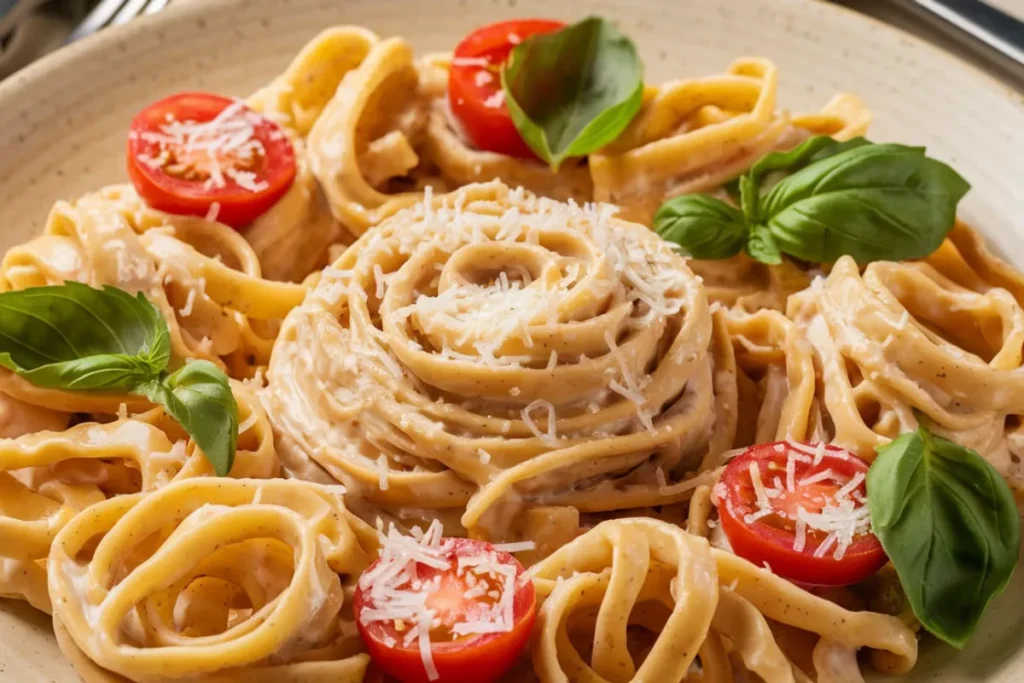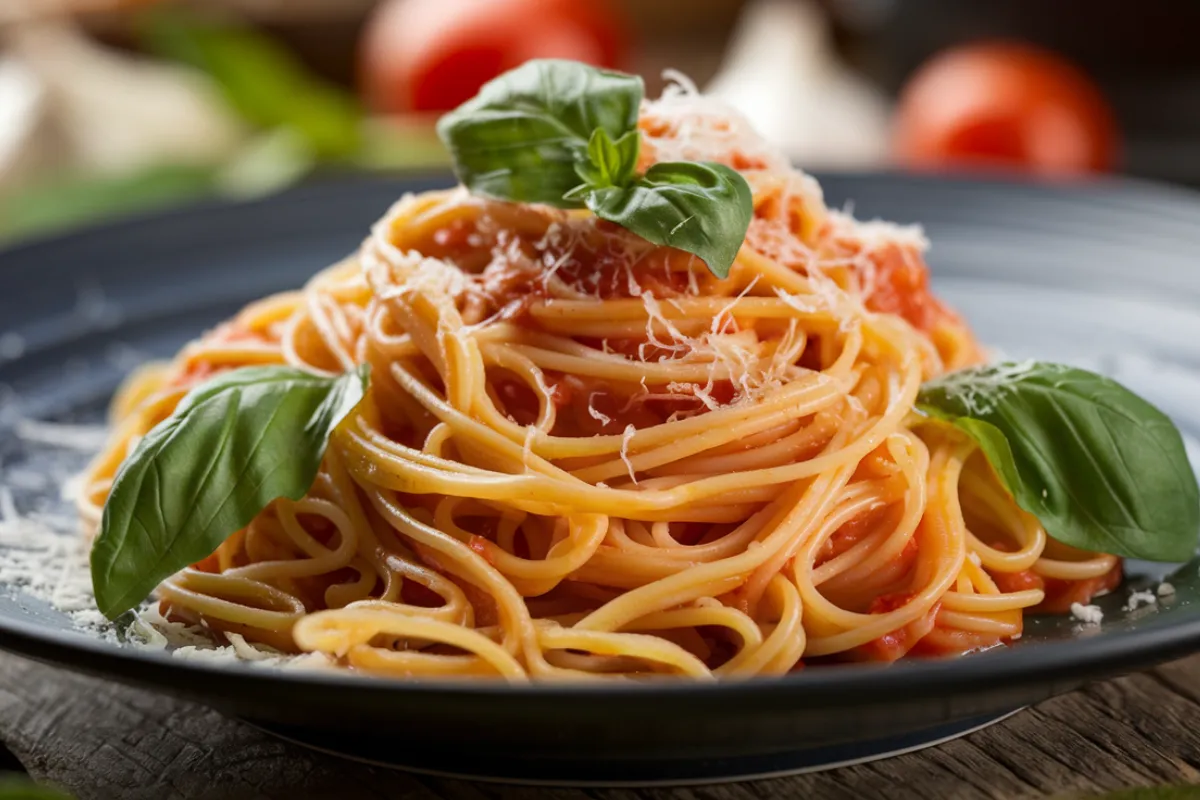Introduction
Vermicelli is a versatile and popular type of pasta used in various cuisines around the world. Known for its thin, delicate strands, it can be used in everything from soups to salads, and even desserts. Whether you’re a novice cook or a seasoned chef, mastering the art of cooking vermicelli is essential. This ultimate recipe will guide you through the process of cooking perfect vermicelli every time, ensuring that your dishes are always delicious and satisfying.
In this comprehensive guide, we’ll cover everything you need to know about this pasta, from its origins and varieties to tips on how to cook it to perfection. We’ll also provide a step-by-step recipe that will have you making the most delicious dishes in no time. So, let’s dive in and discover the secrets to making the best vermicelli you’ve ever tasted!
What is Vermicelli?
This type of pasta is thinner than spaghetti but thicker than angel hair pasta. The name comes from the Italian word “vermicello,” which means “little worms.” This might sound unappetizing, but the name actually refers to the pasta’s long, slender shape.
Vermicelli is used in a variety of dishes across different cultures. In Italy, it’s often used in soups and broths. In Asian cuisines, particularly in China, India, and Southeast Asia, it’s a staple ingredient in many traditional dishes. It can be found in stir-fries, salads, and even desserts.
Varieties of Vermicelli
There are different varieties depending on the region and the primary ingredient used in making it. Here are some of the most common types:
- Italian: Made from durum wheat, this type is often used in Mediterranean and Western dishes.
- Rice Vermicelli: Commonly used in Asian cuisines, this variety is made from rice flour and is popular in dishes like Vietnamese pho and Thai salads.
- Mung Bean Vermicelli: Also known as glass noodles or cellophane noodles, this type is made from mung bean starch and is popular in Chinese and Korean dishes.
- Wheat Vermicelli: A common variety in India, used in dishes like upma and kheer.
Each type of vermicelli has its unique characteristics, making it suitable for different culinary applications.
The Perfect Vermicelli: Tips and Tricks
Before we get into the recipe, it’s important to know how to cook it properly. The key to a great vermicelli dish lies in how the pasta is cooked. Here are some tips and tricks to ensure it turns out perfect every time.
1. Choose the Right Type
The first step to making a great vermicelli dish is choosing the right type. As mentioned earlier, there are different varieties, each suited for different types of dishes. For instance, if you’re making a light soup, Italian vermicelli might be the best choice. If you’re making a stir-fry, rice vermicelli would be ideal.
2. Cook Vermicelli Al Dente
Just like with other types of pasta, it should be cooked al dente, which means “to the tooth” in Italian. This means that the pasta should be cooked until it’s tender but still firm to the bite. Overcooking vermicelli can make it mushy, which is something you definitely want to avoid.
3. Use Plenty of Water
When cooking vermicelli, it’s important to use plenty of water. This helps to prevent the pasta from sticking together. A good rule of thumb is to use at least four quarts of water for every pound of vermicelli.
4. Salt the Water
Don’t forget to salt the water before adding the vermicelli. This adds flavor to the pasta as it cooks. A general guideline is to use about one tablespoon of salt per gallon of water.
5. Stir Occasionally
To prevent the vermicelli from clumping together, be sure to stir it occasionally as it cooks. This is especially important during the first few minutes of cooking.
6. Rinse with Cold Water (for Some Dishes)
For certain dishes, such as salads or stir-fries, you may want to rinse the cooked vermicelli under cold water to stop the cooking process and to remove excess starch. This helps to keep the pasta from sticking together.
Step-by-Step Vermicelli Recipe
Now that you know the basics of cooking vermicelli, let’s get into the step-by-step recipe. This recipe is versatile and can be adapted to suit your taste and the ingredients you have on hand.
Ingredients
- 200 grams of vermicelli (any type)
- 2 tablespoons of olive oil or vegetable oil
- 1 onion, finely chopped
- 2 cloves of garlic, minced
- 1 bell pepper, sliced
- 1 carrot, julienned
- 100 grams of mushrooms, sliced
- 200 grams of chicken breast, thinly sliced (optional for vegetarians)
- 2 tablespoons of soy sauce
- 1 tablespoon of oyster sauce (optional)
- 1 teaspoon of sugar
- Salt and pepper to taste
- Fresh cilantro or parsley for garnish

Instructions
1. Prepare the Vermicelli
Begin by boiling a large pot of water. Once the water is boiling, add the vermicelli and cook according to the package instructions until al dente. For most vermicelli, this will take about 3 to 5 minutes. Be sure to stir occasionally to prevent sticking.
Once the vermicelli is cooked, drain it in a colander. If you’re making a salad or a stir-fry, rinse the vermicelli under cold water to cool it down and remove excess starch.
2. Sauté the Vegetables
While the vermicelli is cooking, heat the olive oil in a large pan over medium heat. Add the chopped onion and garlic, and sauté until they become fragrant and the onion is translucent, about 2 to 3 minutes.
Add the sliced bell pepper, carrot, and mushrooms to the pan. Cook for another 5 minutes, or until the vegetables are tender but still have a bit of crunch.
3. Cook the Chicken (If Using)
If you’re adding chicken to your vermicellii dish, push the vegetables to the side of the pan and add the sliced chicken breast to the center. Cook the chicken for about 4 to 5 minutes, or until it’s fully cooked and no longer pink in the center. Stir occasionally to ensure even cooking.
4. Combine Ingredients
Once the chicken is cooked, mix it with the vegetables in the pan. Add the cooked vermicelli to the pan and gently toss everything together.
5. Season the Dish
Add the soy sauce, oyster sauce (if using), sugar, salt, and pepper to the pan. Toss the vermicelli and vegetables to coat them evenly with the sauce. Taste and adjust the seasoning if necessary.
6. Serve and Garnish
Transfer the vermicelli to a serving dish. Garnish with fresh cilantro or parsley. Serve immediately and enjoy!
Variations and Serving Suggestions
The beauty of vermicellii lies in its versatility. You can adapt this recipe to suit your preferences and the ingredients you have on hand. Here are some variations and serving suggestions to inspire your creativity.
1. Vegetarian Option
For a vegetarian version of this dish, simply omit the chicken. You can add tofu or tempeh for protein, or load up on more vegetables like zucchini, spinach, or broccoli.
2. Spicy Twist
If you like a bit of heat, add some chili flakes or a splash of hot sauce to the dish. You can also stir in some sliced fresh chili peppers or use spicy soy sauce.
3. Vermicelli Salad
For a refreshing twist, turn this recipe into a cold vermicellii salad. After cooking the pasta, rinse it under cold water and toss it with fresh vegetables like cucumber, cherry tomatoes, and lettuce. Dress the salad with a light vinaigrette or a soy-sesame dressing.
4. Stir-Fry
Transform this recipe into a stir-fry by using a wok and cooking over high heat. Add the vermicelli at the end and stir-fry it with the vegetables and sauce for a few minutes until everything is well combined and heated through.
5. Vermicelli Soup
Vermicellii is also great in soups. Add the cooked pasta to a hot broth with vegetables and your choice of protein. This works especially well with rice vermicellii in Asian-style soups like pho or chicken noodle soup.
Frequently Asked Questions (FAQs)
What is the best type of vermicelli for stir-fries?
For stir-fries, rice vermicelli is often the best choice. It’s light, absorbs flavors well, and doesn’t clump together when stir-fried.
Can I use whole wheat vermicelli in this recipe?
Yes, whole wheat vermicelli can be used in this recipe. It will have a slightly different texture and flavor, but it is a healthier option and works well with the other ingredients.
How do I prevent vermicelli from sticking together?
To prevent it from sticking together, be sure to cook it in plenty of water, stir occasionally, and rinse with cold water after draining if the recipe allows.
Is vermicelli gluten-free?
Rice and mung bean vermicelli are naturally gluten-free, but Italian vermicelli made from wheat is not. Always check the packaging if you need to ensure a gluten-free product.
Can I make vermicelli ahead of time?
Yes, you can cook it ahead of time and store it in the refrigerator. To reheat, simply toss it in a hot pan with a little oil or microwave it with a splash of water.
Conclusion
Vermicelli~is an incredibly versatile ingredient that can be used in a wide range of dishes. From stir-fries to soups, salads, and even desserts, the possibilities are endless. By following the tips and recipe provided in this guide, you’ll be able to cook perfect vermicelli~every time. Whether you’re preparing a quick weeknight dinner or a special meal for guests, this ultimate recipe is sure to impress.
So, go ahead and try out this recipe in your kitchen. Experiment with different ingredients and flavors to make it your own. Vermicelli~is a fantastic ingredient to have in your culinary arsenal, and with a little practice, you’ll be able to create delicious and satisfying meals that everyone will love.
Happy cooking!
